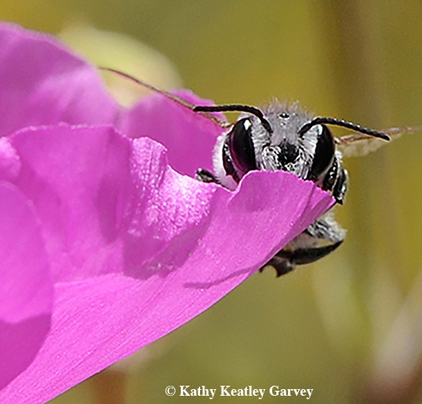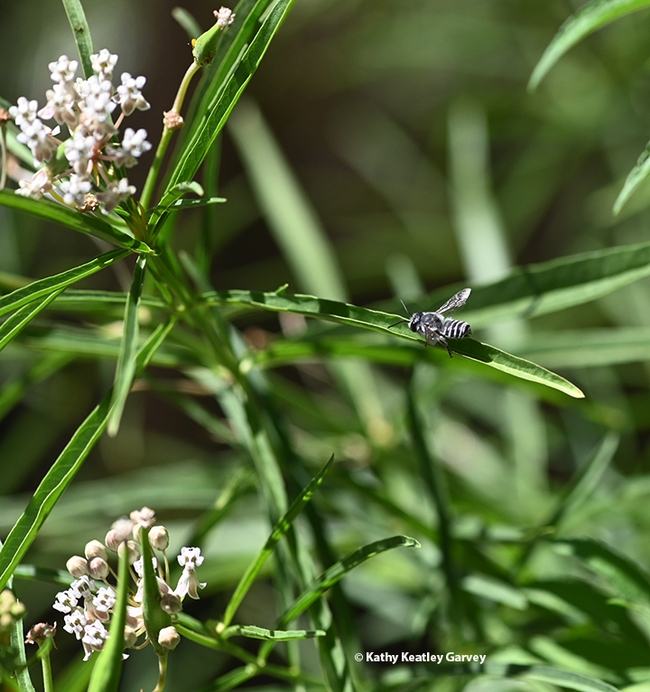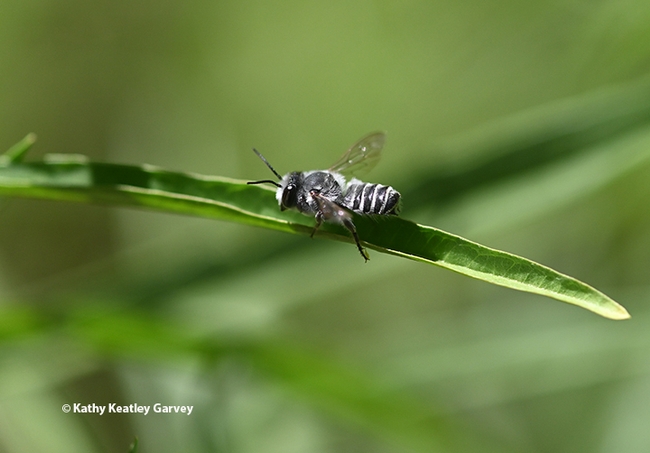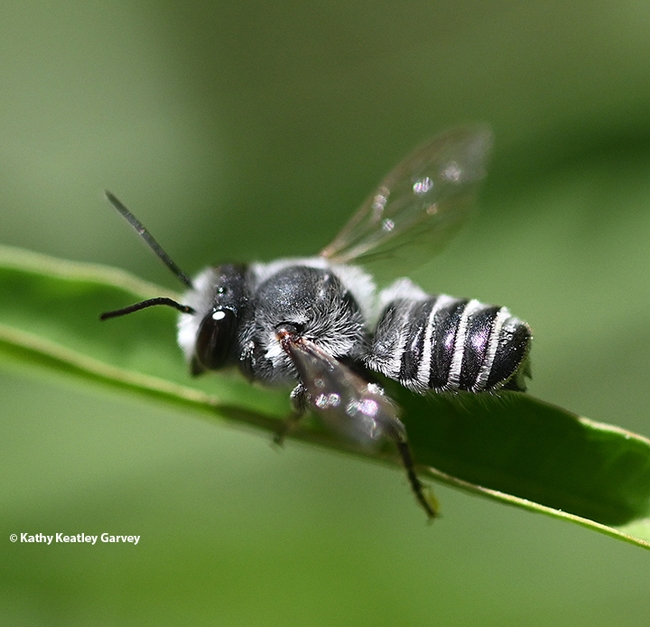
The narrowleafed milkweed, Asclepias fascicularis, beckons monarch butterflies (the host plant), aphids, praying mantids and assorted other insects, but once in a while, you'll see a leafcutter bee. Both the plant and the bee are natives.
This male bee (below) spent the afternoon patrolling for females, but it rested in between.
It's a dangerous place to rest when there's a predator (praying mantis) around, but all ended well.
Leafcutter bees, spp., so named because the females cut leaves and petals (perfectly round holes!) to line their nests, are smaller than honey bees--and much faster. They're easily recognizable by the black-white bands on their abdomen.
The females do all the work. They gather pollen and nectar, make the nests from the leaf and petal fragments, and lay eggs. They seal the egg chambers with the leaves or flower petals.
The male's job is to reproduce. And sometimes, you'll see one sunning itself on a milkweed leaf.
Of the 4000 bee species known in the United States, about 1600 reside in California. The leafcutter bee is just one of them. The family, Megachilidae, includes these leafcutting bees, Megachile angelarum, M. fidelis and M. montivaga; the alfalfa leafcutting bee, M. rotundata; the Mason bee, Osmia coloradensis; and the blue orchard bee (BOB), Osmia lignaria propinqua.
For more information on California's bees, read California Bees and Blooms: A Guide for Gardeners and Naturalists (Heyday), the work of UC-affiliated scientists,
Attached Images:

A leafcutter bee, Megachile spp., rests on a leaf of milkweed, Asclepias fascicularis, in a Vacaville, Calif. garden. Both are natives. (Photo by Kathy Keatley Garvey)

The leaf is long and the leafcutter bee is short. Leafcutter bees are smaller than honey bees. (Photo by Kathy Keatley Garvey)

Close-up of the male leafcutter bee. (Photo by Kathy Keatley Garvey)